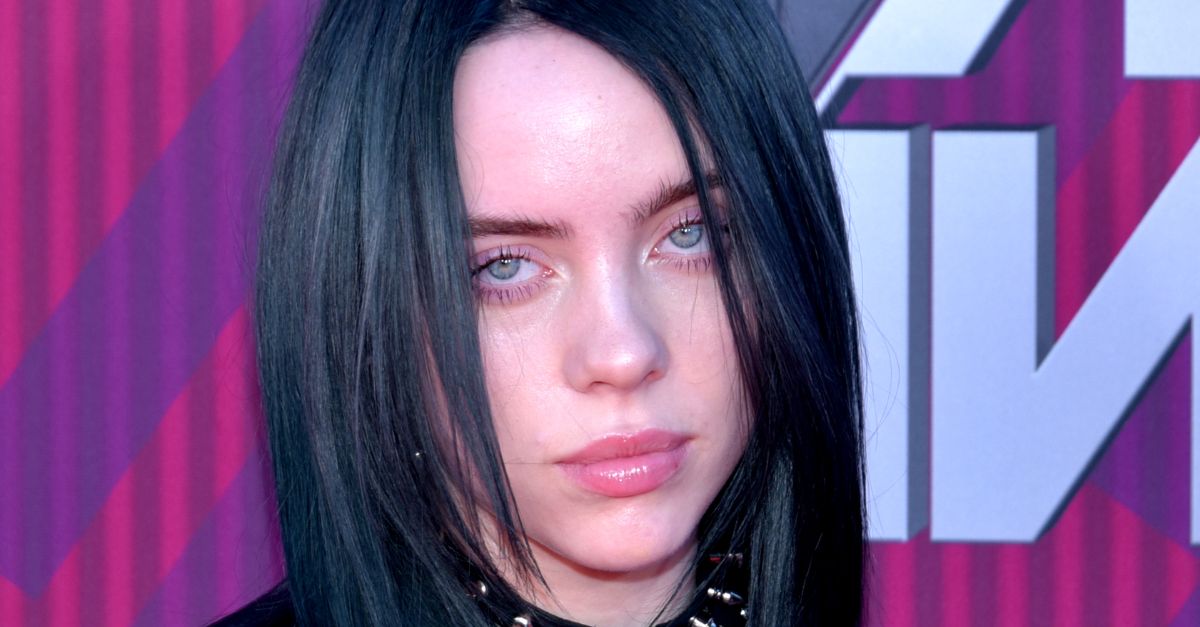When The Small Screen Got Honest
For decades, television treated mental illness like a twist, a joke, or a temporary crisis conveniently resolved before the credits rolled. Then something shifted. Writers stopped glossing over the mess and started showing the parts of mental health that are slow, uncomfortable, and often painfully human.

Ginny & Georgia
A teen drama on the outside and a nuanced mental-health portrait on the inside, Ginny & Georgia digs deep into anxiety, self-harm, depression, and disordered eating. Ginny’s therapy journey, Marcus’s depressive episode, and Abby’s body-image struggles are handled with surprising care. The writers’ consultation with mental-health professionals shows: nothing here feels like shock value—it feels lived in.
 Screenshot from Ginny & Georgia, Netflix
Screenshot from Ginny & Georgia, Netflix
Undone
After a near-fatal car crash, Alma begins slipping through time in Undone, a visually dreamy series that blends mental illness, trauma, and shifting reality. Its ambiguity—visions or symptoms?—captures the uncertainty many people feel when navigating their own minds. Rather than leaning on stereotypes, the series treats Alma’s fear and confusion with gentle empathy.
 Screenshot from Undone, Amazon Prime Video
Screenshot from Undone, Amazon Prime Video
Degrassi: The Next Generation
Degrassi has always been teen TV’s overachiever when it comes to hard topics. Campbell’s season-long depression arc remains one of its most honest, showing that depression isn’t a straight line downward—it ebbs, flows, and sometimes hides behind a smile. Other storylines, like Emma’s anorexia, vary in execution but helped introduce mental-health conversations to a generation of young viewers.
 Screenshot from Degrassi: The Next Generation, MTV Canada
Screenshot from Degrassi: The Next Generation, MTV Canada
Mr. Robot
In Mr. Robot, Elliot’s dissociative identity disorder and psychosis aren’t plot gimmicks—they’re the lens through which the entire story unfolds. The show places viewers inside his unreliable reality, capturing the fear, confusion, and loneliness that accompany a mind at issue with itself. Elliot is never reduced to a diagnosis, which is exactly why the portrayal works.
 Screenshot from Mr. Robot, NBCUniversal
Screenshot from Mr. Robot, NBCUniversal
Black-ish
Bow’s postpartum depression storyline in Black-ish quietly broke ground, particularly by centering a Black mother navigating symptoms so many women feel but rarely discuss. The episode captures both her internal experience and her family’s uncertainty about how to help. It normalizes a form of depression that still carries far too much stigma.
 Screenshot from Black-ish, ABC (Disney)
Screenshot from Black-ish, ABC (Disney)
My Mad Fat Diary
Rae—funny, flawed, and fresh out of a psychiatric hospital—anchors My Mad Fat Diary, which depicts body-image issues, self-harm, and stigma with rare honesty. Based on real diaries, the show blends raw vulnerability with humor, mirroring how mental illness often feels: heavy one minute, ridiculous the next.
 Screenshot from My Mad Fat Diary, E4
Screenshot from My Mad Fat Diary, E4
Ted Lasso
Behind Ted’s sunny optimism lurks grief, depression, and panic attacks tied to his father’s self inflicted end. Ted Lasso normalizes the vulnerability of seeking therapy, especially for men conditioned to tough it out. Watching Ted slowly trust his therapist is one of the show’s most meaningful arcs—and one of TV’s most accurate depictions of how uncomfortable therapy can feel at first.
 Screenshot from Ted Lasso, Apple TV+
Screenshot from Ted Lasso, Apple TV+
Spinning Out
In Spinning Out, elite skating intersects with bipolar disorder in both Kat and her mother, Carol. The show refuses to tidy up its portrayal of mania, shame, missed medication, and stigma. Kat’s manic spiral—risky spending, partying, strained relationships—rings true because the show doesn’t sensationalize or resolve it neatly.
 Screenshot from Spinning Out, Netflix
Screenshot from Spinning Out, Netflix
Crazy Ex-Girlfriend
Rebecca’s impulsive cross-country move sets the stage for a series that becomes a thoughtful exploration of borderline personality disorder. Her diagnosis and journey toward stability are handled with nuance and humor. The show avoids stereotypes by letting Rebecca be complex, lovable, frustrating, and deeply human—all at once.
 Screenshot from Crazy Ex-Girlfriend, Warner Bros. Television
Screenshot from Crazy Ex-Girlfriend, Warner Bros. Television
I Know This Much Is True
This emotionally intense series follows twins Dominick and Thomas, the latter living with paranoid schizophrenia. It’s a raw depiction of institutional failings, family guilt, and the emotional cost of caregiving. By exploring Dominick’s own trauma alongside Thomas’s struggle, the show broadens the conversation around how mental illness affects entire families.
 Screenshot from I Know This Much Is True, HBO
Screenshot from I Know This Much Is True, HBO
Sex Education
This show balances humor with some of TV’s most grounded mental-health plots. Aimee’s slow recovery from assault, Jackson’s panic attacks and self-harm, and the group’s reliance on one another highlight the importance of community during psychological struggle. Therapy isn’t a punchline here—it’s a lifeline.
United States of Tara
Tara’s dissociative identity disorder impacts every member of her family, and United States of Tara isn’t afraid to show the chaos and tenderness in equal measure. Instead of using DID for shock value, the show normalizes it through humor, empathy, and a refusal to villainize Tara or her alters.
 Screenshot from United States of Tara, Paramount
Screenshot from United States of Tara, Paramount
BoJack Horseman
Don’t let the talking animals fool you—BoJack Horseman is one of TV’s most piercing depictions of depression, addiction, and self-destruction. Sarah Lynn’s relapse and passing remain one of the medium’s most heartbreaking portrayals of substance misuse. The show illustrates that wanting to get better and actually getting better are two entirely different battles.
 Screenshot from BoJack Horseman, Netflix
Screenshot from BoJack Horseman, Netflix
Perception
Perception centers a brilliant neuropsychiatrist with paranoid schizophrenia who solves mysteries while navigating hallucinations, medication, and the emotional toll of psychosis. Despite some dramatization, it gives viewers a rare protagonist whose intelligence and empathy exist alongside—and not in spite of—his illness.
 Screenshot from Perception, TNT (Warner Bros. Discovery)
Screenshot from Perception, TNT (Warner Bros. Discovery)
Euphoria
Euphoria doesn’t glamorize the mental-health struggles intertwined with Rue’s addiction. Her relapses, grief, and self-destructive behavior are shown in all their rawness. Jules’s special episode adds emotional depth, exploring gender, abandonment, and the emotional labor of supporting someone in crisis. The show can be triggering, but it’s never careless.
Legion
In Legion, David’s schizophrenia and evolving powers intertwine in a surreal swirl of hallucination, fragmented reality, and existential confusion. The show visualizes psychosis with creativity rather than fearmongering, making the audience feel David’s isolation and instability from the inside out.
Normal People
Connell’s depression and anxiety appear quietly in Normal People—in drained energy, panic attacks, withdrawn body language, and his grief after a friend’s passing. The series highlights the ongoing difficulty men face when asking for help, giving space to a subtle but powerful portrayal of male vulnerability.
 Screenshot from Normal People, Hulu
Screenshot from Normal People, Hulu
Manic
Manic sends two strangers through surreal dreamscapes during a pharmaceutical trial meant to heal psychological wounds. The show’s emotional core isn’t the sci-fi device but the connection between Annie and Owen, underscoring that healing is rarely linear—and never something you do alone.
 Screenshot from Maniac, Netflix
Screenshot from Maniac, Netflix
Final Thoughts
What these 18 shows share is not a diagnosis but a philosophy: mental health isn’t something to be fixed in an episode—it’s something to be lived with, talked about, and cared for over time.
Television may not be therapy, but these stories remind us of something essential: no one is alone in their struggle, and talking about mental health is never something to be ashamed of.
You May Also Like:
TV Shows That Captured Millennial Nostalgia Perfectly
TV Narrators So Good, We Wish They’d Narrate Our Own Life Stories










